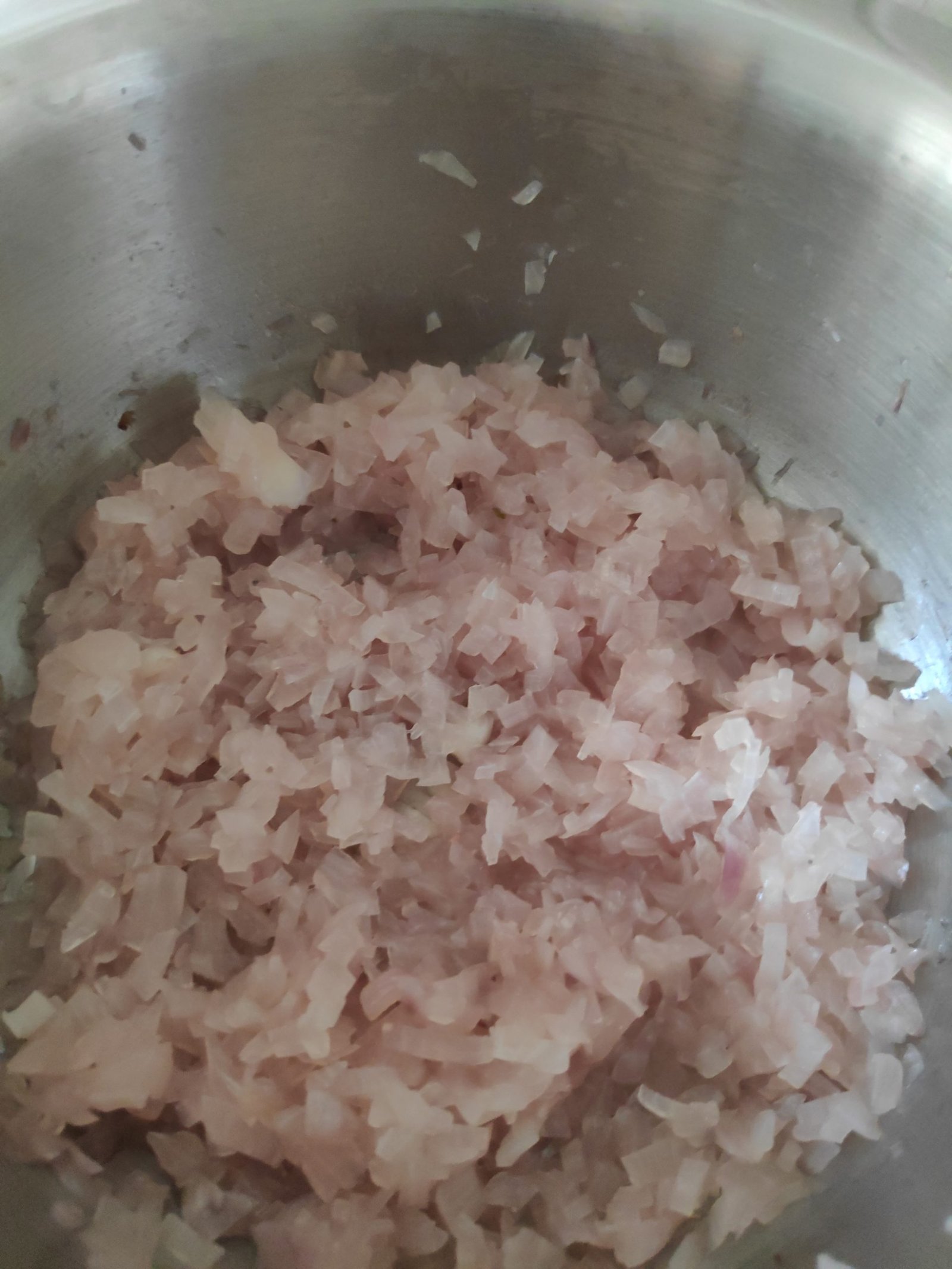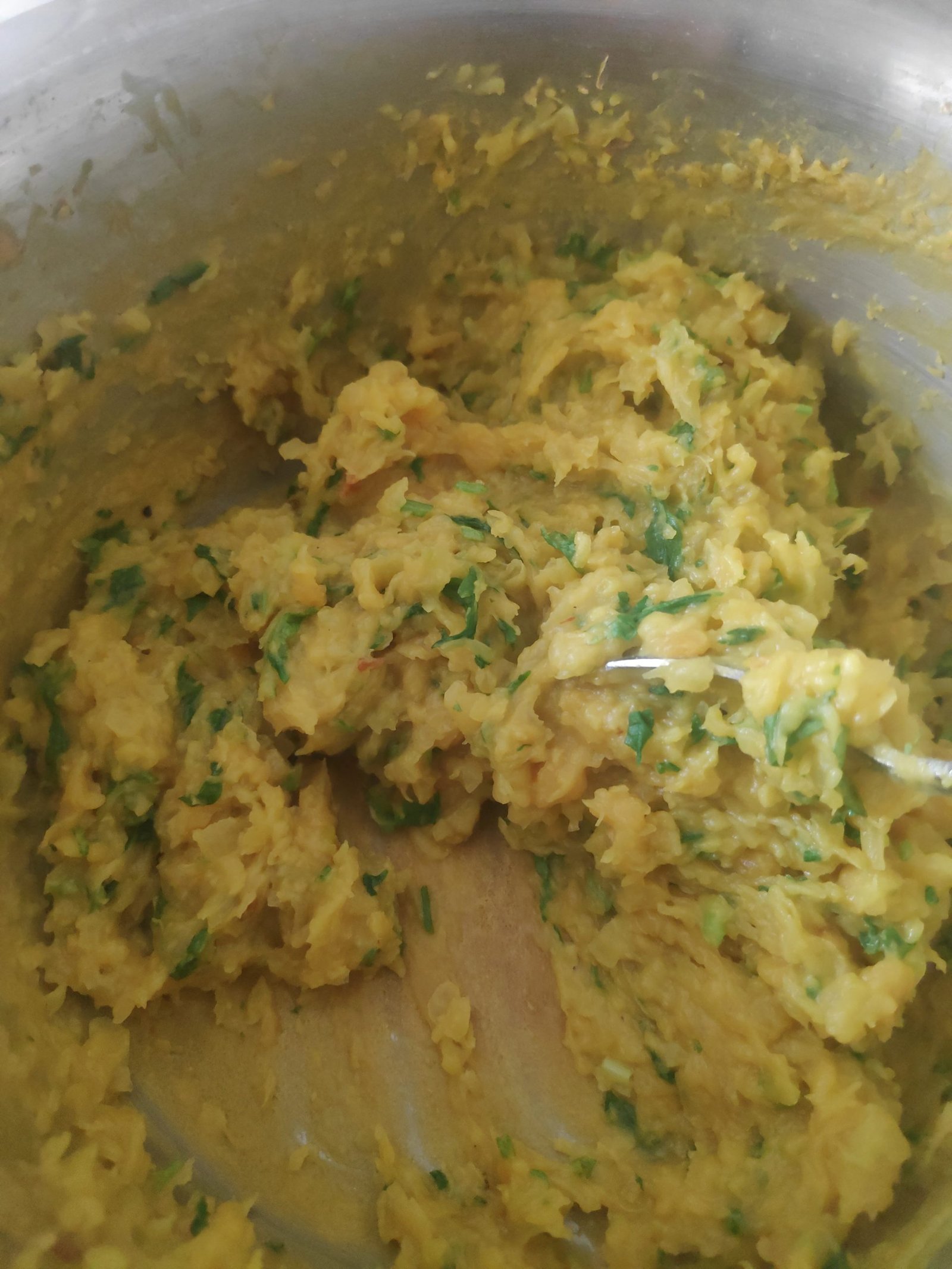Recipe Credit: Darshana Muzumdar
Serves 4 as part of an Indian meal
This is a very common dish especially in the state of Maharashtra and is eaten with jowar bhakri (sorghum flat bread). There are special restaurants that serve pithla bhakri or zunka bhakri though it may not be made with cabbage. The cabbage can be replaced by cauliflower, snake gourd, ridge gourd, and also kovai/tendli/tindora (ivy gourd).
Ingredients
- 250-300 gms cabbage (1½ -2 cups of grated cabbage)
- 2 large or 3 medium sized onions
- 2 tsp red chili powder or 2-4 dried red chilies broken into tiny pieces
- ½ tsp turmeric powder
- ¼ tsp asafoetida
- 1½ cups besan (Bengal gram /chickpea flour)
- ½ cup fresh coriander, chopped
- 1 tbsp jaggery or palm sugar (optional)
- 2-3 tbsp groundnut/coconut oil
- Salt to taste
Method
ZUNKA
Wash and grate the cabbage or chop it finely. Chop the onions finely. Heat oil in a thick bottomed steel pan and sauté the onions till they are soft and translucent and a light golden color. Add the chili powder or red chili pieces, turmeric and asafoetida and sauté till they release their aroma. This should take around 5 to 10 seconds. Add the cabbage and salt and half a cup of water and cook on a low flame till the cabbage is soft and cooked well. Add a little more water if necessary. Turn off the heat and sieve the besan into the pot. This is to ensure there are no lumps while cooking. Mix it well with the cabbage mixture and add half a cup of water. Turn on the heat to low and cook it covered for two or three minutes. Remove the cover and continue cooking mixing it repeatedly to prevent it from sticking to the bottom. Cook till the flour has lost its raw taste and the mixture is almost dry. Add a little water if necessary to ensure that the besan is cooked well. Taste and add the jaggery if necessary. Usually, the sweetness of the onion is enough. Turn off the heat and add the chopped coriander leaves leaving a few for garnishing.
PITHLA
For the pithla, soak a small lime sized ball of tamarind in 2-3 tablespoons of water and let it soak for 5 to 10 minutes. Add 2 cups of water to the besan and mix it well and keep aside for 10 to 15 minutes. Mix it well again till all the lumps are dissolved. A whisk can help get this done faster. Add the softened tamarind and the besan mixture to the cooked cabbage. Cook it on low heat mixing it continuously till it comes to a boil. Keep the heat low otherwise the hot mixture may splash out on to your hands. The thickness can be adjusted to your liking by adding another half or one cup of water. Once the mixture is cooked well and the besan has lost its raw taste add the coriander leaves leaving some for garnishing.
For the Whole-Food Plant-Based (WFPB) version:
Use rock salt instead of refined salt.
Do not use oil. For the whole plant version do not use oil. Add a little salt to the chopped onions and keep them aside in a thick bottom steel pot for 15 minutes for them to release moisture. Turn on the heat and sauté it. Add a couple of tablespoons of water or more if necessary till the onion is cooked and soft and then continue to sauté it till it is lightly golden brown. Alternatively, put the chopped onions in a pressure cooker, add half a cup of water and pressure cook for one whistle. Once the pressure cooker is cooled, open it and sauté the onion till all the water has evaporated and the onion starts becoming slightly brown. Add the cabbage and a cup of water and cook it till it is soft.
Heat an iron tempering ladle and add the red chili pieces if using. Sauté them slightly and add them to the cooked onion and cabbage. If you are using chili powder, sauté it with the turmeric for a couple of seconds next and transfer it to the mixture. Lastly, add the asafoetida to the hot ladle and dry roast it for around 5 to 10 seconds or till it releases its aroma. Take care not to let it burn. Transfer it to the onion and cabbage mixture. Continue with the rest of the dish as above.
Use date paste instead of jaggery. Use soft dates and blend them with very little water. If using dates that aren’t very soft, soak them in warm water for half an hour before blending them to a paste.
Share this:
- Click to share on Facebook (Opens in new window)
- Click to share on WhatsApp (Opens in new window)
- Click to share on Twitter (Opens in new window)
- Click to share on Pinterest (Opens in new window)
- Click to share on LinkedIn (Opens in new window)
- Click to share on Reddit (Opens in new window)
- Click to share on Tumblr (Opens in new window)
- Click to share on Pocket (Opens in new window)
- Click to share on Telegram (Opens in new window)
- Click to print (Opens in new window)









